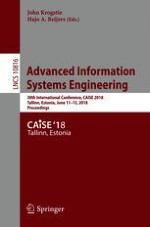This book constitutes the refereed proceedings of the 30th International Conference on Advanced Information Systems Engineering, CAiSE 2018, held in Talinn, Estonia, in June 2018.
The 37 papers presented in this volume were carefully reviewed and selected from 175 submissions. The papers are organized in topical sections on Process Execution, User-Oriented IS Development, Social Computing and Personalization, the Cloud and Data Services, Process Discovery, Decisions and the Blockchain, Process and Multi-level Modelling, Data Management and Visualization, Big Data and Intelligence, Data Modelling and Mining, Quality Requirements and Software, and Tutorials.
